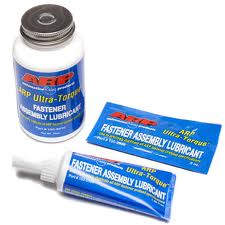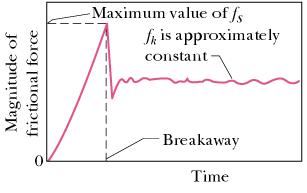ARP Head Stud Torque

The 6.0L Powerstroke is prone to head gasket failure, also known as "blown head gaskets." For more information on this issue, see our article.
ARP recommends using 3 equal steps to achieve 245 ft-lbs of torque on their 6 Liter (Litre) PSD head studs, but here at Fleet Service Northwest, we use a 7-step process, starting at 65 ft-lbs and increasing the torque each step by 30 ft-lbs, allowing us to avoid inaccurate torque due to static friction, and ensuring accurate torque and proper and consistent head stud tension.
ARP has revised the maximum torque setting to 210 ft-lbs due to a new grease. However, these principals still apply.

Static friction, or fs, is a force that prevents objects in contact with each other from moving relative to one another, while kinetic friction, or fk, is the force between two objects that are in contact and moving relative to one another, also known as sliding or rubbing. The maximum static friction force between two surfaces is always greater than the kinetic friction force between those surfaces. This can be seen by attaching a fish scale to the side of a box sitting on a smooth floor and pulling until it is on the verge of moving. Note the force indicated by the fish scale, as this is your maximum static friction force. Next, pull just hard enough to make the box move at a slow, constant speed. As the box moves slowly across the floor, note that the fish scale indicates a lower force than before, the kinetic friction force. Additionally, note that pulling harder than this force makes the box accelerate while pulling softer makes the box decelerate. This is because kinetic friction is roughly constant, and does not increase to match the pulling force as static friction does.


Similarly, when an increasing amount of torque is applied to a head stud or other fastener, it at first does not move, due to the static friction which counteracts the turning force applied by the torque wrench. When the force applied by the torque wrench just exceeds the maximum static friction force, kinetic friction takes over as the fastener begins to turn. This immediate kinetic friction force is always less than the static friction force between those surfaces, although this force increases as the fastener turn due to the threads increasing the tension on the fastener. This also means that the maximum static friction increases with each movement of the torque wrench, requiring a greater force to resume movement of the fastener than was required to move it to each resting position.
To ensure truly accurate torque, and eliminate the static friction effect, each step in the torque process should allow continuous movement of the fastener, so that the torque wrench indicates the desired torque without static friction, and the tension on the head studs is consistent across the cylinder head and matches what the engineers at ARP intended. While we at Fleet Service Northwest have found that approximately 30 ft-lbs is appropriate when installing these studs on the 6.0 Powerstroke, this can vary based on torque wrench length and clearance issues which can vary in the variety of 6L Powerstroke platforms, as well as the strength of the technician. ARP head studs must receive a liberal coating of high-quality grease on the threads and all contact surfaces between the nuts and washers, which reduces but does not eliminate both static and kinetic friction.
Visit our Ford Trucks Home for more.
Rob Gaskell, Jr.
Diagnostics
Fleet Service Northwest, Inc.